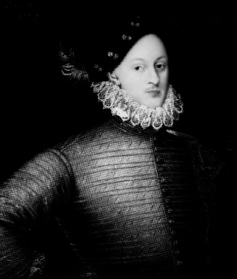ANONYMOUS SHAKE-SPEARE
The Man Behind
320 pages
98 Illustrations
E-Book
Price: 9,99 $ / 8,69 €
(c) Doelling and Galitz Publishing House, Ltd.
All rights reserved
ISBN 978-3-96218-021-9
Available from now
amazon.com
amazon.uk
amazon.de
apple ibook store in itunes
Barnes & Nobles
libreka


After the academic world has been guessing and floundering for 150 years, the literary detective Kurt Kreiler surprises us with a book that addresses this subject after years of sound and thorough academic research.
Table of Contents
Foreword from the author
1. The Collapse of the Monument
2. Invited to write, he was in pain
3. The Author of the plays
4. The social perspective
5. The discovery of the key
6. The Biography I (1550-1583)
7. Does the key fit?
8. Mellifluous & honey-tongued Shakespeare
9. The Biography II (1584-1604)
10. Ben Jonson's falsification Epilogue
Bibliography
Index of Names
Complete content of the book >>
Index of Names >>
"I am a sort of haunted by the conviction that the divine William
is the biggest and most successful fraud ever
practiced on a patient world."
Henry James (1903)
Although it's been suspected for the last 100 years that William Shakspere (1564-1616) from Stratford-upon-Avon cannot have been author of the dramas of the genius WILLIAM SHAKE-SPEARE, a conclusive proof could not be established.
"Shakespeare" was the pseudonym chosen by an artist who originated from the English aristocracy in order not to be identified as a playwright by the common people. His name: Edward de Vere, Earl of Oxford (1550-1604). The alias recurs to the spear-shaking goddess Pallas Athena, since the Earl was one of the best jousters of his times, who submitted himself as a "learned poet" to the patronage of Athena (=Minerva). This iridescent poet didn't write his comedies and tragedies for the common stage but for the Elizabethan court.
Kreiler quotes dozens of contemporary allusions which generations of intepreters have ignored. He shows the masks and names behind which the poetic Earl concealed his identity. Alternatively the author called himself ‘Fortunatus Infoelix’ (=THE FORTUNATE UNHAPPY), ‘Meritum petere grave’ (It’s hard to petition for that which one has earned), ‘My lucke is losse’, ‘Phaeton’- and WILLIAM SHAKE-SPEARE. At the age of twenty-three he anonymously published his first work, an novel interspersed with poems, and at twenty-five he travelled to France and Italy for one year.
For seven years he refused to see his young wife, after friends had denounced her. This lady was the daughter of the Queen's advisor, Lord Treasurerer William Burleigh. Later the marriage bore three daughters, the eldest of which should to be married to the Earl of Southampton, the youth of Shakespeare's Sonnets. But the ‘fair youth’ refused Oxford’s daughter. Edward de Vere sat in judgement at Mary Stuart's trial. After the death of his first wife, he married Elizabeth Trentham and had to acknowledge that his beloved youth, Henry Wriothesley, Earl of Southampton, had committed high treason.
Presumably Oxford's heirs would have lifted the master's identity after his death, had not an "operational accident" occurred: the publication of the Sonnets by Thomas Thorpe. The heirs and owners of Shakespeare’s manuscripts felt compromised by this publication and decided to "safeguard" the alias of the deceased. For this purpose they engaged the playwright Ben Jonson, an admirer and envier of Shake-speare, who established a namesake of the dramatist, the actor William Shakspere as a dummy. Ben Jonson completed his work with an ambiguous preface to the First Folio edition of the works of William Shakespeare (1623). This coup remained undiscovered for almost fourhundred years.
Kreiler found out new facts by studying two literary contemporaries of the Earl of Oxford: the rhetorician Gabriel Harvey and the satirist Thomas Nashe. These two appealed to the writing Earl for his backing in their literary contest. In their pamphlets they addressed him as „Master William“, „Will Monox“, „Master Apis lapis“, „Old Ass“, „Phul Bullochus“, „Gentlewoman“ and „Idle Hours“. Funnily enough the thus denominated answered with his – Shakespeare’s - play Love's Labour Lost, in which he stages Harvey and Nashe as Don Adriano and his page Moth, without omitting any details of their literary contest. A plethora of further indications such as Kreilers convincing dating of the "Merchant of Venice" to 1579 or "Hamlet" to 1586 establish a new image of Shakespeare which won't be shaken easily.
Imprint
Published by Dölling und Galitz Verlag Ltd (Hamburg and Munich)
Schwanthalerstrasse 79, RGB, D-80336 Munich, Germany
Tel: 0049/(0)89-23230966
Email: dugverlag@mac.com
Homepage: www.dugverlag.de
Translated by: Martin Peake
Cover design: Thomas Jarzina (JARZINA kommunikations-design)
Technical realization: GUDBERG u. Media Ltd & Co. KG, Hamburg; Lore Galitz and Antonia Renner, Dölling und Galitz Verlag Ltd, Munich
First Edition 2011
Copyright © 2011 by Dölling und Galitz Verlag Ltd, Munich
